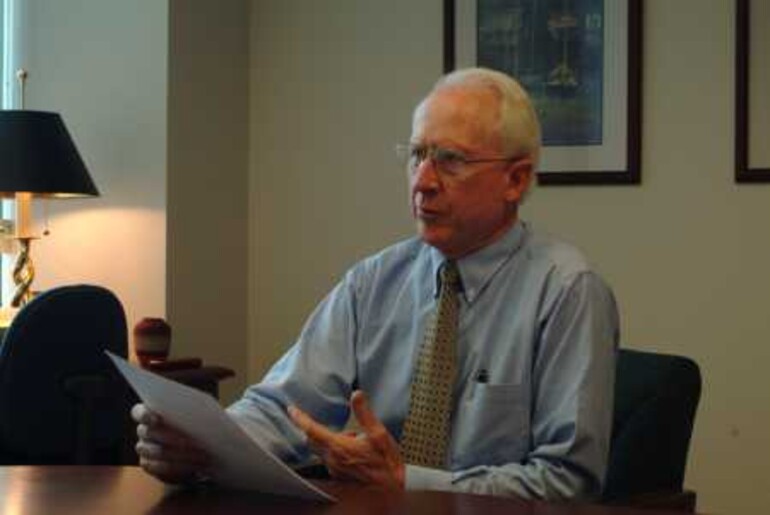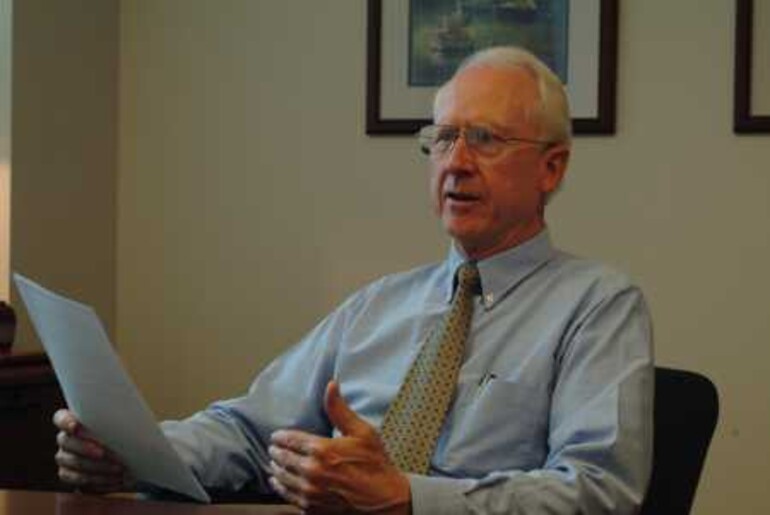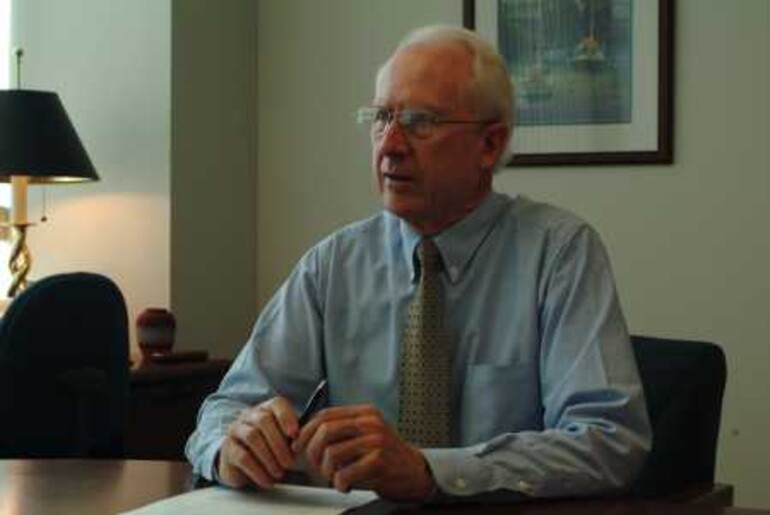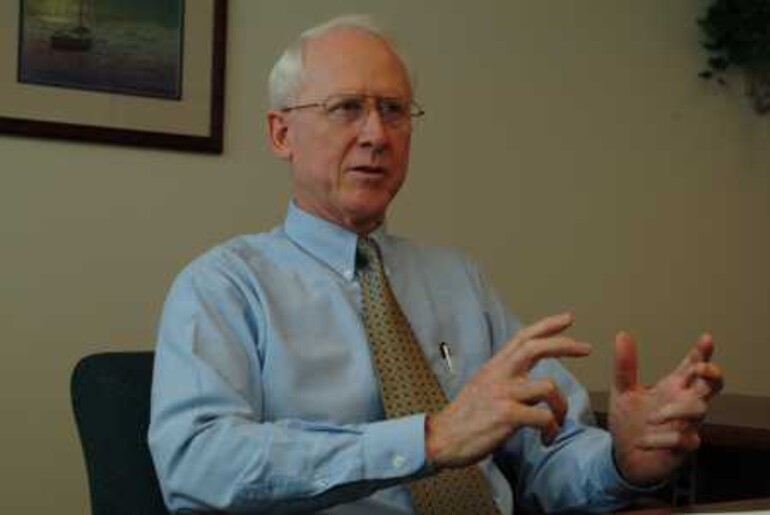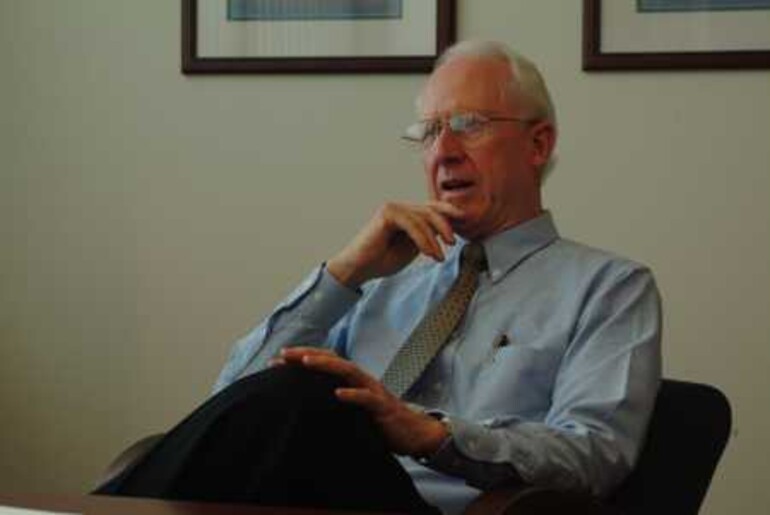This is the second of a three-part series of interviews with the officers of the North Pacific Union Conference. These interviews are presented with the hope that they will provide the readers a greater understanding of the scope, structure and workings of the Adventist Church. —Editor
GLEANER: Within North America, half of the current Adventist members have joined the church in just the last decade. Does that mean that many of our newer members have little understanding about our church’s history, mission or structure?
PASCOE: Well, I've also heard that if current trends continue, by the year 2020 nearly 90 percent of our members will have joined the Adventist Church since the year 2000! That presents some interesting challenges, which are currently being discussed at the General Conference.
As new members do come in, we must make sure that they understand the foundation of our church and our unique prophetic calling. Distributing Ellen G. White's resources worldwide, for instance, has significant bearing on our history and our mission. These kind of initiatives are even important for us in North America, where we lag well behind much of the world church in membership growth. We can’t take our church mission for granted. Each new generation needs to reinvest and take ownership in that mission. I want my two-year-old granddaughter to be exposed to those values that have made us a movement with a unique mission as she grows up.
Is it true that half of Adventist members older than 18 are single? What should we be doing to make singles feel valued and welcome?
Well, I think the 50 percent estimate is a bit high, as demonstrated by Monte Sahlin’s recent survey. But when you consider that many of our young adults are choosing not to marry until they have completed their education, often in their 30s today, our 20-somethings are a large group that should be positively integrated into the life of the church. And those who have experienced the heartache of divorce or the loss of a spouse also need to feel that the church belongs to them and is not just geared for families.
Ultimately, the best way for any of us to have a sense of belonging is to actively involve ourselves in a ministry of the church. Ministry opportunities should not be limited to a certain segment of the church family, as it curtails the very means by which spiritual growth and identity are formed.
What are we doing to address the Valuegenesis issues of why our young people leave the church? What more should we be doing as conferences, churches and individual members?
Valuegenesis revealed a number of significant things, including the role of an interesting family worship. If I were the parent of young children, this would lead me to invest time and energy in a dynamic, participative daily worship in the home—and the same sort of creativity in making Sabbath special.
We learned from Valuegenesis2 that our churches and schools also have significant influence, which is critical since many of our kids lack a positive home influence. Perhaps our churches and schools together with God’s grace can make up some of the difference for them. Some of our students have recently returned from evangelistic mission trips during spring break. This is one way in which the churches and schools work together to provide life-changing experiences for our youth.
A number of new members leave the church soon after they are baptized. Why does that happen, and what can we do about it?
There are two significant things that make a real contribution to the retention of church members: social networking and spiritual growth. Studies have demonstrated that if new members can connect personally with at least seven other members, they are more likely to stay in the church. I would venture to say that if there are connections made with those actively involved in the mission of the church, that the retention rate would be the strongest. Friendships in the church alone are not adequate. Under certain circumstances they can break down, and then sometimes a person is lost spiritually as a result. The church is more than a social club. It takes spiritual growth and depth for the body of Christ to be developed in a healthy way.
From your experience, what are the best ways a local church can retain their members, both young and old?
I think of three things: vitality in worship, variety in avenues of service and a vision to reach the world for Christ. If that vision can permeate the life of the church, it will keep a healthy climate in the church family and contribute greatly to the retention of its members, the Adventist message and mission.
Do you feel that to attract younger members, we should create churches targeted specifically at those in their 20s and 30s?
I believe we ultimately miss something when we target a church to a specific group. Some of the finest fellowship takes place in the multigenerational churches. To see a grandparent engaging in the life of a more contemporary worship service and a young person appreciating the values of a more traditional service is wonderful. Frankly I think we need each other, and in so doing it may help us to avoid the extremes as we become more sensitive to one another. To me there is wholeness that can only happen when our different generations worship and do mission together.
Some local church “growth” is actually current members transferring from other Adventist churches. Shouldn’t we be focusing more on local evangelism, with new converts creating real “kingdom” growth?
Absolutely. We need to seek for many more new conversions—kingdom growth that results in a net growth of membership, not simply shuffling members from one area to another. Our evangelical friends consistently report that those who are really serious about reaching the world or even their own local communities for Christ should be having a 10-percent annual growth rate in new conversions. With Adventist growth here in the Northwest and throughout the NAD, it’s time we realize that we have become satisfied with far less—a tepid growth rate closer to a meager two percent. With population growth in some of our Northwest cities at least five percent, we are losing ground. As church leaders and members, we must study how we can rearrange our use of time, resources and media to strategically change this trend. On the other hand, our Hispanic churches are showing dramatic growth, approaching and even surpassing that 10-percent figure in some cases. They are giving us all a case study on how to live evangelistically.
You mentioned that dramatic growth is taking place in many of our Hispanic churches. Does the culture of Anglo churches prevent this type of growth, or do you feel that can change?
The influence of the larger culture of society is more the reason than just the culture of the typical Anglo church. I say this because it is the first-generation Hispanic churches that are growing so rapidly. We find that the second- and third-generation Hispanics, those born in the U.S., are susceptible to the same societal influences as are the established Anglo churches. So in this sense, it is possible for the Anglo churches to have significant growth, as some are doing, if they have a mission priority that resists the worldly culture.
If trends continue as they are, what cultural characteristics will be seen in Northwest membership in 10 years?
Hispanic immigration will continue to shift the ethnic ratios of our membership in the Northwest and the U.S. at large. Ten years from now, if the current trend continues, I would expect the Hispanic church to represent 14 percent of our Northwest membership. However, I would like to think that through a deepening discipleship experience and a willingness to learn from our first-generational members, greater growth could take place across all ethnic groups. We are experiencing significant growth in the number of ethnic companies and churches, particularly in our urban areas. The increase in the number of Russian, Korean and other Asian groups in particular is changing the composition of the church in the Northwest. Multiculturalism provides rich opportunities for growth both quantitatively and qualitatively. Unity in diversity is an expression of what the gospel can achieve within the church family.
Why do we continue to hire additional pastoral staff for larger churches? Shouldn’t lay leaders take some of that responsibility so that the professional ministers can focus on soul-winning and planting new churches, like they do in other countries where the work is growing much faster?
In our staffing formulas, we have built-in incentives for churches to receive added staff. There is some reasonable rationale for this, but you have touched a nerve here. The dilemma is twofold at least. Why shouldn’t our pastors who are effectively growing churches receive additional professional support to share the leadership load? Other Christian churches are demonstrating that larger-staffed churches can grow within the North American culture. In fact they are growing at the 10-plus percent rates similar to our overseas counterparts. So there has to be more to it than just the issue of the ratio between paid and volunteer staff. The question is how far can we go with expanding the paid staff and not lose some other mission objectives in the church, both local and global?
Here is the other dilemma, and I think your question touched on it. We have inspired counsel that cautions us to not have pastors “hover over the churches.” Their energies are to be focused on reaching outward and planting other new congregations. This would require a major shift in focus and resource allocation. I grew up in a western country where I saw a shift from itinerant pastors to those assigned to a specific local church or district. If we were to shift back to that earlier model, what impact would it have on pastors’ spouses and families?
So you see we are not going to exhaust this topic in this interview. However, can we engage more volunteer leadership in our local congregations in more significant areas of ministry? Yes, we can and should for the internal health of the church. Can we strategically design ways to plant more churches in our communities without totally disrupting our pastoral families? Yes, we can, and again it would be healthier than some of our present practices. There is, after all, a world out there to be saved for Christ, and our communities are comprised of enough population to be worthy of establishing many more congregations to complement the value of our larger established churches.
Is there a way to have more leadership training to help local church members be more effective in their elected church offices?
Too often we assume people will just pick up an assignment and run with it. This is a mediocre approach at best. So two things: Yes, let us expand the training opportunities, then let us make sure that the training is effective. This is more challenging. A curriculum-based approach can be helpful if the courses are presented in a hands-on, fast-paced, practical way. Busy people do not need or want hours of theory. But all effective training models need an application component. That which is not applied will soon be forgotten. The old adage, “watch one, do one, teach one,” is still pretty good. It would be great if, in each of our churches, we could develop more of a mentor/apprentice type of system, where the apprentice learns by watching and doing then becomes, in time, a mentor for another apprentice. That process, if embraced, would not only lessen the load but provide a great tool for each new member to be involved.
Describe the balance that needs to exist between nurture and outreach, baptisms and discipling.
Effective outreach can only take place where the Christian disciplines of prayer, devotions and witness are being practiced. The gospel commission calls us to go and make disciples, baptizing and teaching them, so they go hand in hand.
Ask any small group that meets on a regular basis how the dynamic changes when seeking guests become a part of the group. While there is need for some internal nurturing of those within our membership, it should be for the purpose of strengthening the body for its mission. We must keep our focus outward and avoid “navel gazing,” which can turn a church congregation in on itself. A growing church is consistently a happy church.
Most of our Northwest churches are now connected to the new e-Adventist membership program. Could you briefly summarize what advantages that brings to us as a church?
It is simply an efficient tool, a secure Internet database that will ultimately help us to stay better connected as a church family and to minimize anyone “falling through the cracks.” Beyond this basic service of membership transfers, there are many other potential uses that can help pastors provide better care for their members and for the life of the church. The system does contain careful guidelines to protect and assure the appropriate use of the information by a limited number of people.
There is sometimes a disconnect between church programs initiated by the NPUC or local conference and the average member in the pew. How can we do better at working together as a team on our common mission as a church?
I recognize there are parts of our overall mission that a local church and its members can move ahead on more actively on their own. But there also quite a few things that we can do together that we cannot do separately. If the union and local conferences are providing programs and services the members really need and want, then our teamwork is successful. Pathfinder programs are still effective at the local level, yet none of our churches would be able to pull off the national Oshkosh Camporee without cooperative leadership at all levels of the church. How effective would our global mission efforts be if we did not have the infrastructure to support mission teams that are making contributions of service in so many parts of the world? And there are many other examples like that.
On the other hand, none of us like to be force-fed something we don't need or value. It's important that those of us in union or conference leadership stay involved at the local church level to stay in tune with the real needs of our members. And we need to be willing at times to bury some ideas that we thought might be useful if, in fact, our members don't need them or use them.
What percentage of membership could be classified as active? How do you define active?
On average our attendance is no more than 50 percent of our book membership. I happen to belong to a church where Sabbath worship attendance often exceeds the book membership, so there are exceptions. Praise the Lord! With prayer, active follow up and small group connections, I believe many of our churches can attract more members who not only want to attend but become actively part of the church and its mission.
As I see it, an “active” member is not simply one who attends every Sabbath. The gospel commission is to go and “make disciples,” which to me is the real definition of an active member. In fact, some who cannot regularly attend due to health challenges or other reasons can still be active at home or in their workplace at carrying out the church’s mission.
While we want to avoid stereotyping, what are some common characteristics of a committed and active Adventist member? Is there a difference between a “cultural” Adventist and a “spiritual” one?
Frankly, I think the term "cultural Adventist" is an oxymoron. There might be some who think of themselves that way, but I believe that to be an Adventist means we identify with something far greater than any cultural characteristic. We are clearly living in a foreign environment in today’s world. The contrast between the kingdom of God and the kingdom of man is becoming more dramatic every day.
Our calling as Christians means that we belong to a radically different kingdom than any earthly one. We are Christians first and then American, or whatever culture. Yes, we are to mingle with our communities as the salt of the earth. We are to live out the Christian values, which we can express in devotion to God and service to our fellow man with all of the discipleship priorities that involves.
If we attempt to be merely “cultural” Adventist Christians, we are attempting the impossible. Our Christian calling continues to be as Jesus defined it, “to be in the world but not of the world.” That is our spiritual calling, challenge and opportunity.




